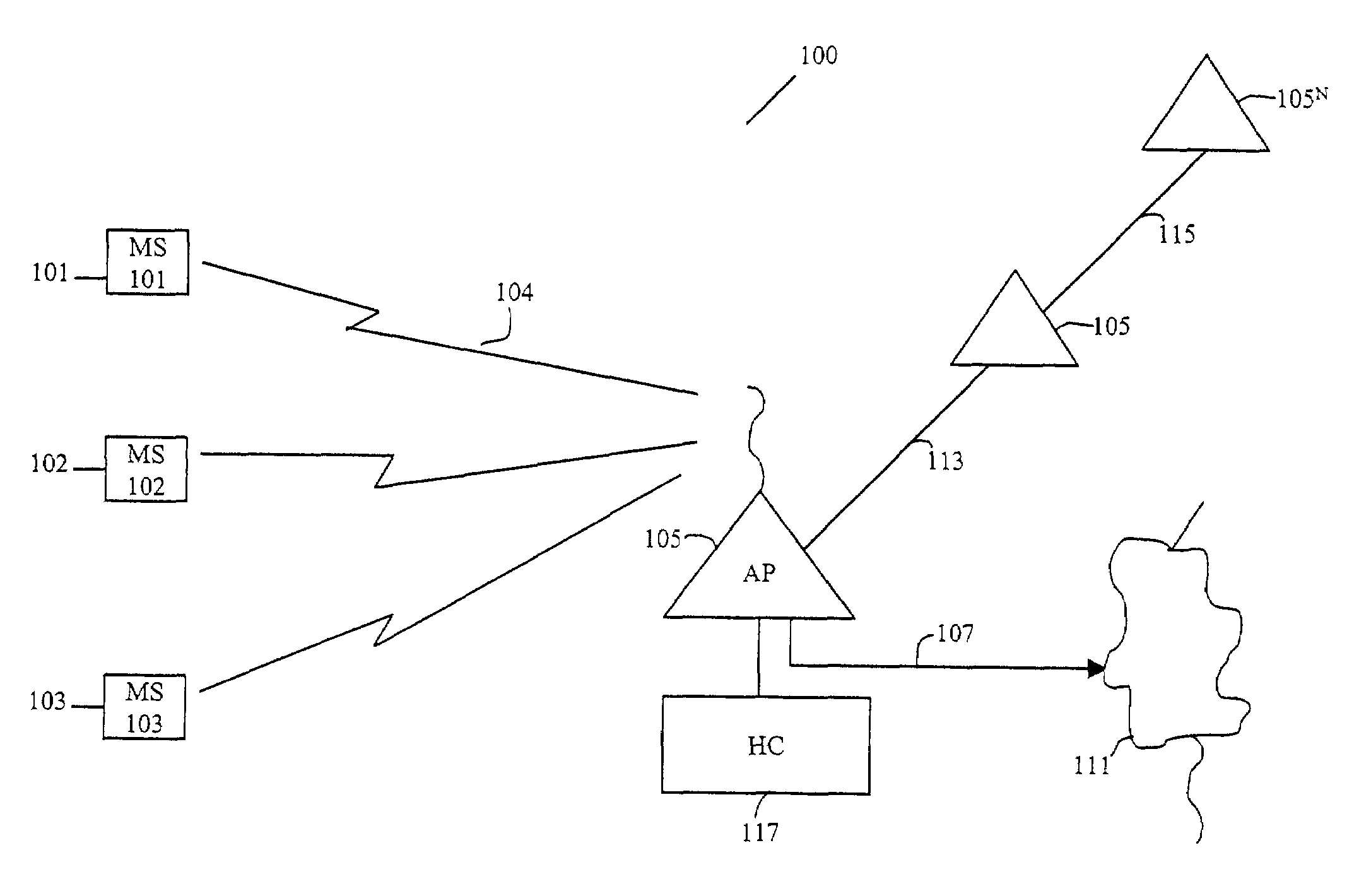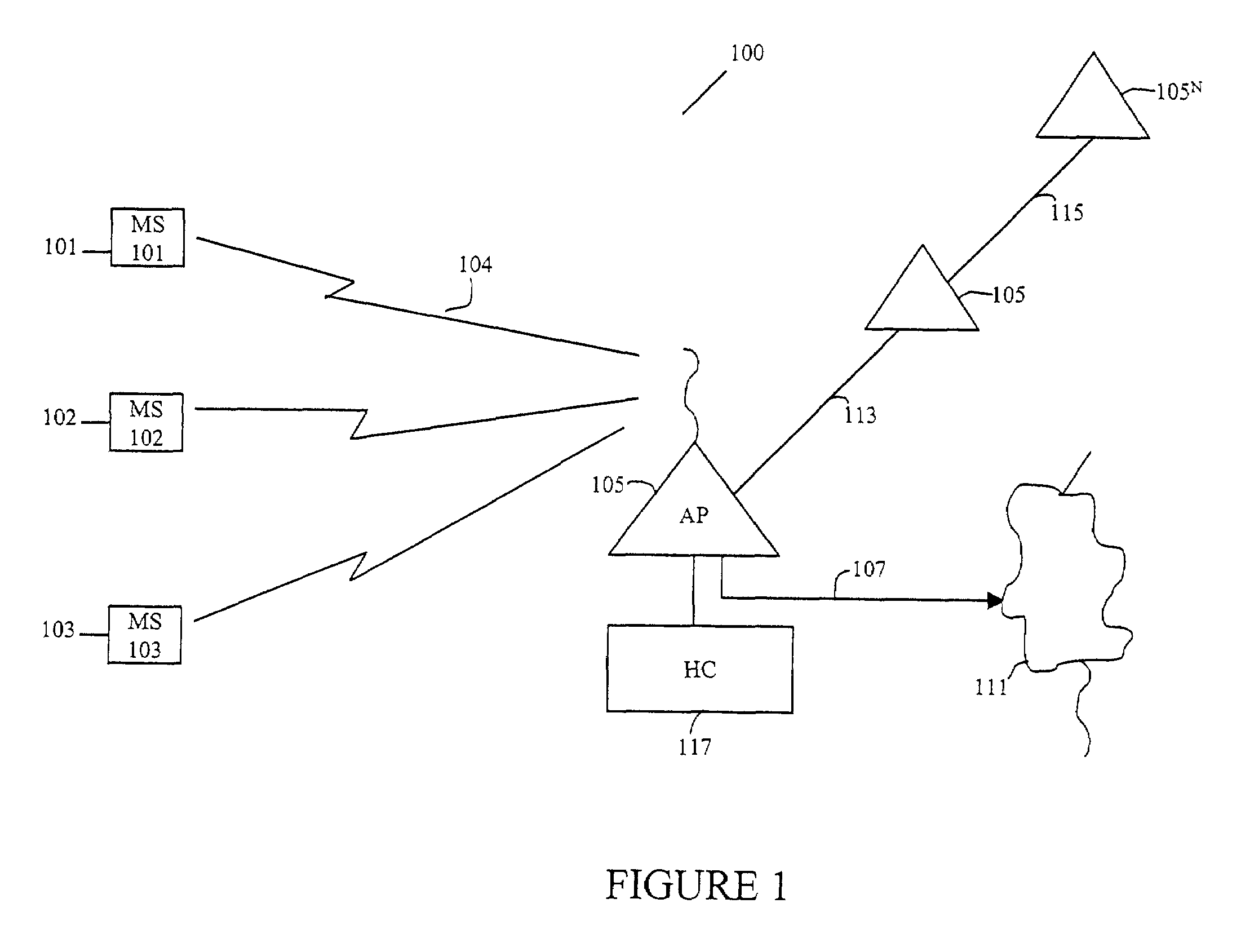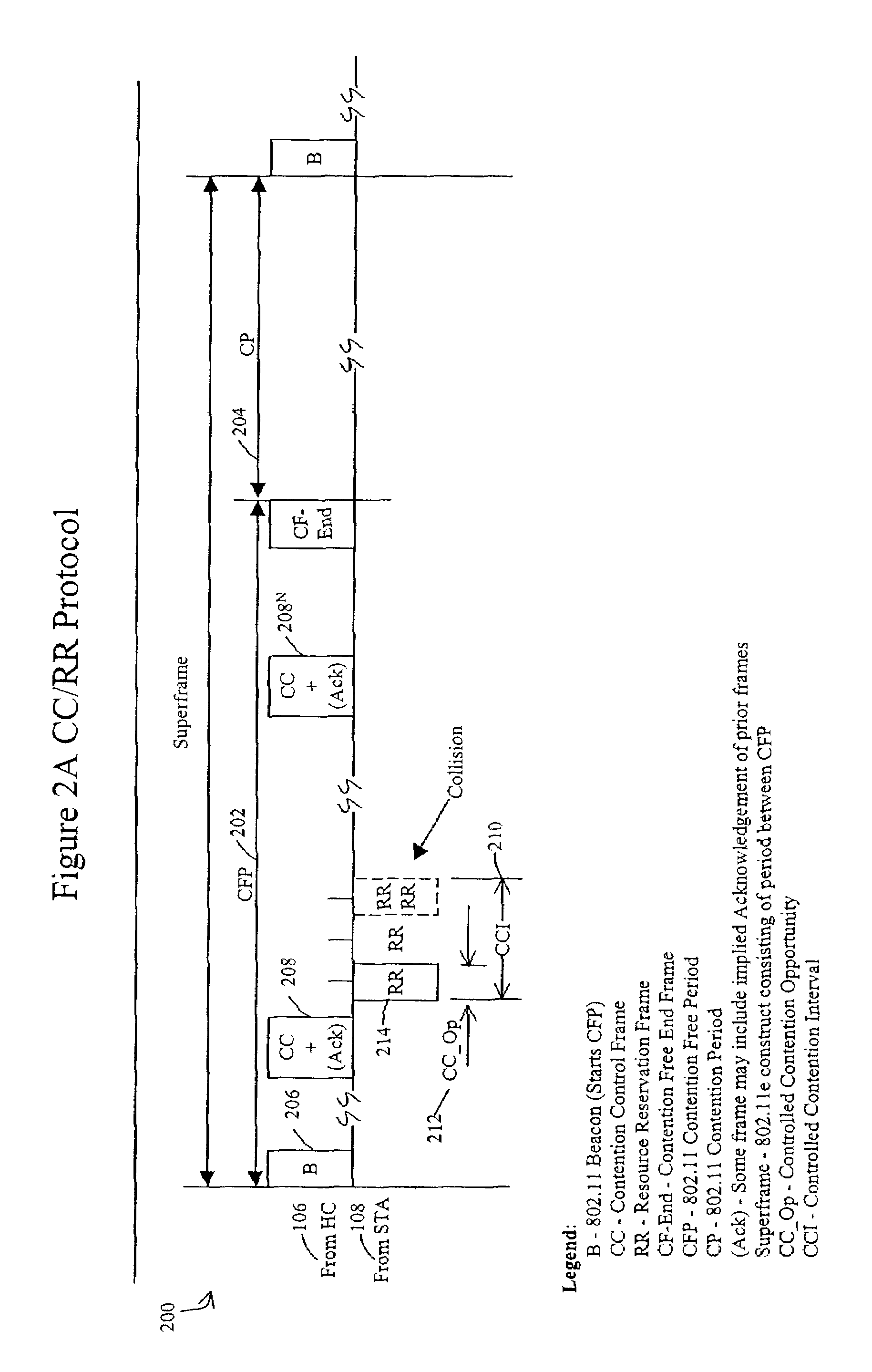Method and system for optimally serving stations on wireless LANs using a controlled contention/resource reservation protocol of the IEEE 802.11e standard
a wireless lan and contention/resource technology, applied in the field of wireless communication methods and systems, can solve the problems of waste of bandwidth and waste of bandwidth, and achieve the effect of maximizing efficiency
- Summary
- Abstract
- Description
- Claims
- Application Information
AI Technical Summary
Benefits of technology
Problems solved by technology
Method used
Image
Examples
Embodiment Construction
[0027]Before describing the present invention, a brief review of the IEEE 802.11 Wireless LAN Standard is believed appropriate for a better understanding of the invention.
[0028]The IEEE 802.11 standard defines over-the-air protocols necessary to support networking in a local area. The standard provides a specification for wireless connectivity of fixed, portable and moving STAs within the local area. The logical architecture of the 802.11 standard comprises a Medium Access Control (MAC) layer interfacing with a Logical Link Controller (LLC) and providing access control functions for shared medium physical layers. The primary service of the 802.11 standard is to deliver Medium Access Control Service Data Units (MSDU) between the LLC in a network interface card at a STA and an access point. Physical layers are defined to operate in the 2.4 GHz ISM frequency band with frequency hopping or Direct Sequence (DS) modulation. Other physical layers are also defined. The MAC layer provides ac...
PUM
 Login to View More
Login to View More Abstract
Description
Claims
Application Information
 Login to View More
Login to View More - R&D
- Intellectual Property
- Life Sciences
- Materials
- Tech Scout
- Unparalleled Data Quality
- Higher Quality Content
- 60% Fewer Hallucinations
Browse by: Latest US Patents, China's latest patents, Technical Efficacy Thesaurus, Application Domain, Technology Topic, Popular Technical Reports.
© 2025 PatSnap. All rights reserved.Legal|Privacy policy|Modern Slavery Act Transparency Statement|Sitemap|About US| Contact US: help@patsnap.com



